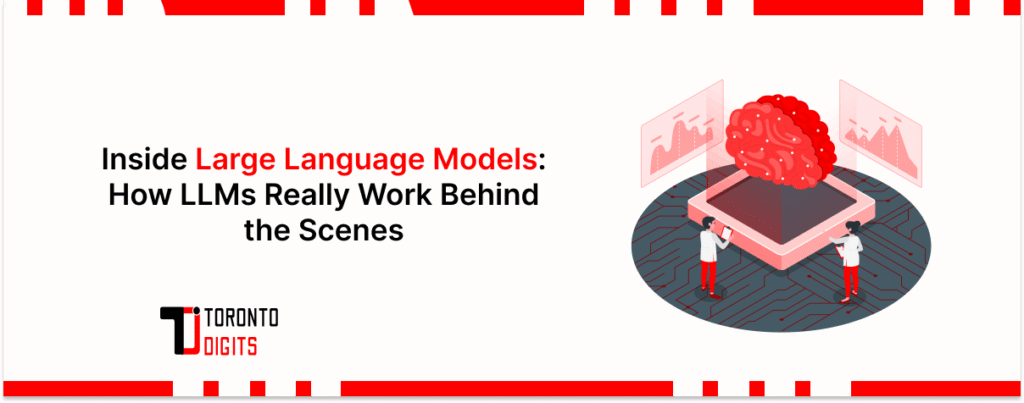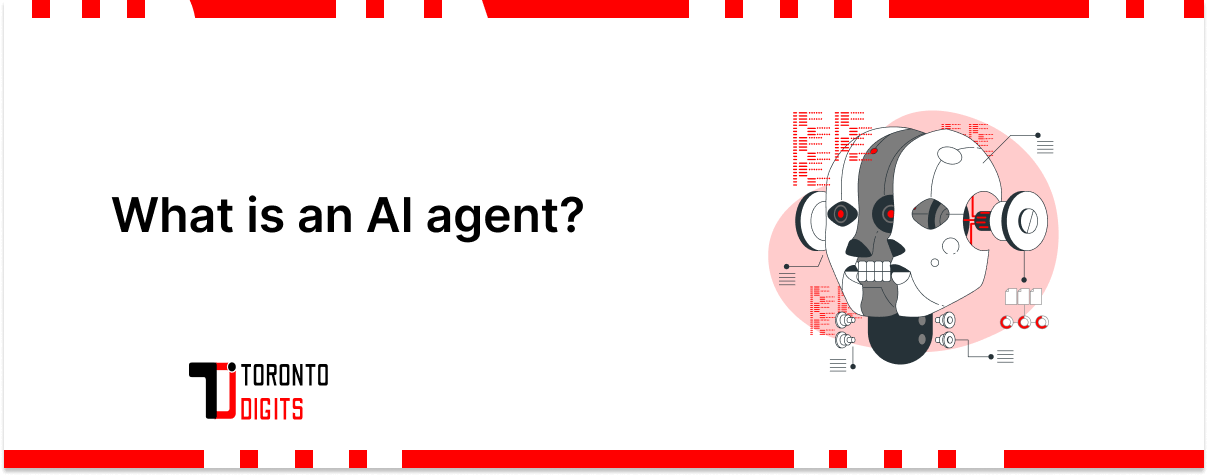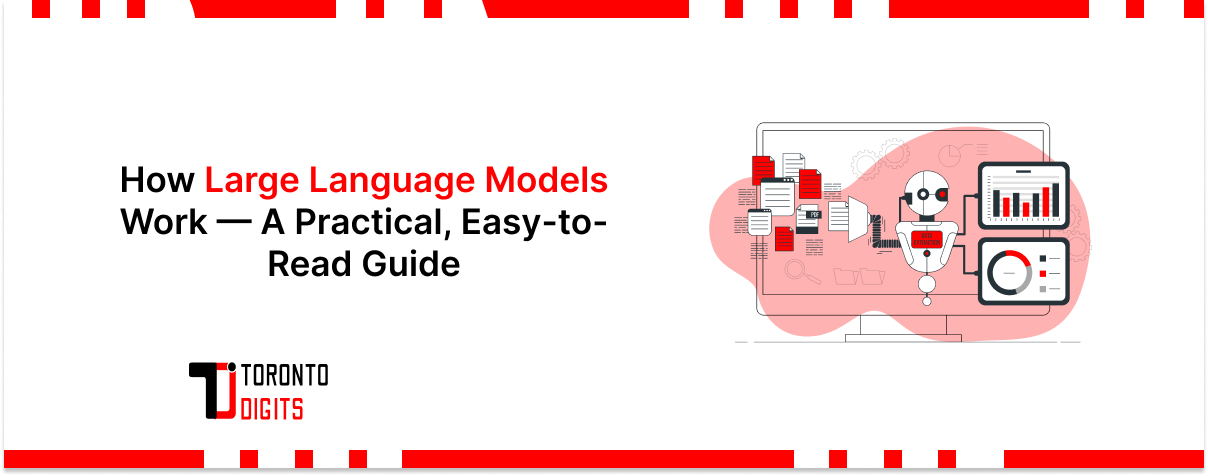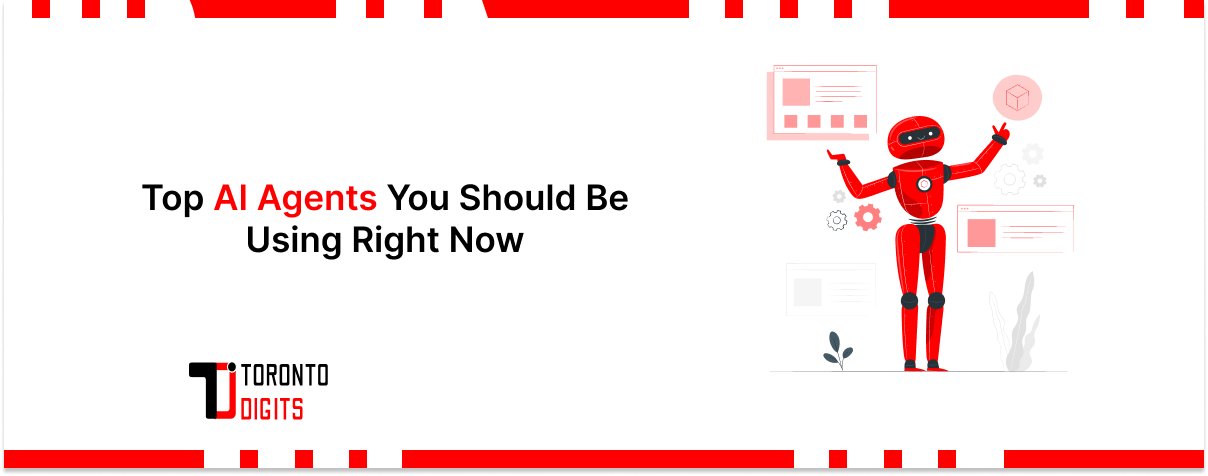Overview
Ever wondered how tools like ChatGPT or Claude can write, explain, and even think like humans? This article takes you behind the curtain to explore how Large Language Models (LLMs) actually work — how they understand, generate, and communicate in natural language using some of the most advanced AI technology ever built.
What Exactly Is a Large Language Model (LLM)?
A Large Language Model (LLM) is a powerful type of artificial intelligence trained on massive amounts of text — from books, articles, websites, and more — to understand the way humans use language. By studying billions of examples, these models learn patterns, meanings, and relationships between words, helping them predict what comes next in a sentence.
At their core, LLMs use a special kind of neural network known as a transformer, which processes information in parallel (not word by word like older models). This allows them to remember context across long passages — which is why they can hold natural conversations, summarize complex topics, or write detailed answers that stay on track.
Today’s most popular AI tools — including ChatGPT, Claude, Gemini, Bard, and Llama — are all powered by this technology. They can answer your questions, draft essays, translate languages, brainstorm ideas, and even write code — all by doing one incredibly complex thing very well: predicting the next most likely word in response to your prompt.
What Makes LLMs Different from Traditional Programming
Traditional computer programs are like strict rule-followers — they do exactly what they’re told. You write specific instructions, such as “If X happens, do Y,” and the program executes them step by step. Everything is pre-defined, and if something unexpected happens, the program often fails because it wasn’t built to handle it.
Large Language Models (LLMs), on the other hand, work completely differently. Instead of following rules, they learn patterns by studying enormous amounts of text — from books, websites, and even lines of code. Through this training, they build a sense of how words and ideas typically connect, allowing them to predict what should come next in almost any context.
Think of it this way:
Traditional programming is like following a recipe word for word — measure exactly, mix precisely, bake for a set time. But an LLM is like a seasoned chef who’s tasted thousands of dishes and can invent new recipes on the fly. The chef might not “know” the chemistry behind each flavor, but they understand what combinations usually work — and that’s exactly how an LLM generates natural, flexible responses.
This flexibility is what makes LLMs so powerful. While rule-based programs break when facing something unfamiliar, LLMs can adapt — using the patterns they’ve learned to handle new questions, phrases, or problems in surprisingly human-like ways.

Tokenization: The Foundation of LLM Technology
Tokenization transforms human language into machine-processable numbers, forming the first crucial step in how LLM technology works. Since computers process numbers, not words, LLMs convert text into numerical tokens that might represent entire words, parts of words, or even punctuation marks.
For example, the phrase “college student” might internally become something like [4872] [2391], with each number representing a token. Common words like “the” or “and” usually have their own tokens, while longer or uncommon words like “entrepreneurship” get split into smaller parts, such as [enter] [pre] [neur] [ship] — kind of like how you might break a long word into syllables.
Once the text is tokenized, the model takes things a step further by converting those tokens into embeddings — complex mathematical vectors that capture meaning. Think of this as creating a 3D map of language, where related concepts sit close together. So in this “semantic space,” “college” and “university” would appear near each other, while “university” and “banana” would be far apart.
For entrepreneurs and professionals using AI tools, it’s useful to know that this process directly impacts how well a model understands your input. If your text includes specialized terms or industry jargon, the model might break them into smaller, less meaningful pieces — unless it’s been trained on data from your specific domain.
The Transformer Architecture: The Power Engine Behind Modern LLMs
At the heart of every modern Large Language Model lies a revolutionary innovation — the Transformer architecture. Introduced in 2017, this design completely changed how AI understands and generates language by allowing models to grasp context more deeply and efficiently than ever before.
The magic behind Transformers comes from something called self-attention — a mechanism that lets the model look at every word in a sentence and figure out how strongly it relates to every other word. Instead of processing language one word at a time (like older models did), Transformers analyze entire sentences or paragraphs all at once. This means they can understand the full context and nuance of language, not just the sequence of words.
Here’s how it works under the hood:
- Encoder layers digest the input text and turn it into rich, contextual representations.
- Decoder layers use that information to generate coherent and relevant output.
- Multi-head attention allows the model to focus on multiple relationships in the text simultaneously — tone, meaning, structure, and more.
- Feed-forward neural networks further refine and transform this information between layers.
This parallel processing ability is what makes Transformers so powerful. They don’t just read — they comprehend the relationships between ideas across long passages, keeping track of context over thousands of words.
For businesses, this architecture unlocks real-world power: LLMs can analyze lengthy documents, connect ideas across pages, and produce long-form writing that stays consistent and on-topic. Whether it’s drafting marketing campaigns, generating reports, or analyzing contracts, Transformers make it all possible — quickly and coherently.
Would you like me to craft the next section (“How LLMs Learn Context and Meaning”) in the same engaging tone to follow this smoothly?
How LLMs Generate Text: One Token at a Time
When a Large Language Model (LLM) writes text, it doesn’t plan out full sentences in advance — it builds them word by word (or more precisely, token by token). Every response you see is the result of a series of tiny predictions made in real time.
Here’s what happens behind the scenes when you type a prompt:
- The model breaks your input into tokens — small numerical chunks that represent words or parts of words.
- These tokens are processed through multiple layers of the neural network.
- The model then calculates probabilities for what the next token could be.
- It selects the most likely token based on those probabilities.
- That token is added to the text, and the cycle repeats — over and over — until the model decides to stop.
This is how an LLM “writes”: by continuously predicting what comes next, one token at a time, guided by the patterns it has learned from billions of examples.
A setting called temperature influences how creative or cautious the model’s output will be:
- Low temperature = safer, more predictable text (great for factual accuracy and consistent tone).
- High temperature = more creative, diverse, and imaginative responses (perfect for brainstorming or marketing).
For businesses, understanding this helps tailor AI tools to your goals. A customer support bot, for instance, might use a low temperature for reliability, while a content team might raise it to inspire fresh, original ideas.
FAQs
What makes LLMs different from older AI systems?
Modern LLMs stand out because of their scale and design. Earlier AI systems used much smaller neural networks that processed text one word at a time, often struggling to keep track of context. Today’s LLMs are powered by the Transformer architecture, which processes words in parallel — allowing them to analyze entire passages at once. With hundreds of billions of parameters and massive training datasets, they can recognize complex patterns and produce remarkably natural, coherent text.
Do LLMs actually understand what they’re saying?
Not in the human sense. LLMs don’t truly understand language — they’re incredibly advanced pattern predictors. When they generate text, they’re not expressing thoughts or beliefs; they’re calculating which words are statistically most likely to come next based on their training. Think of them as supercharged autocomplete systems — capable of sounding intelligent without any real awareness, emotions, or intentions.
What’s the environmental cost of training LLMs?
Training an advanced LLM is incredibly resource-intensive. It requires thousands of high-powered GPUs running for weeks or months, consuming enormous amounts of electricity — sometimes comparable to the annual energy use of hundreds of households. Once trained, using the model requires far less energy, but large models still demand substantial computing power to operate at scale.
How is LLM technology evolving?
LLMs are improving at a rapid pace. Future models are becoming:
- Larger, with even more parameters for nuanced reasoning.
- Multimodal, meaning they can process not just text, but also images, audio, and video.
- Connected, through retrieval-augmented generation (RAG) that links them to live external data sources.
- Smarter and safer, thanks to ongoing research in reducing hallucinations, improving reasoning, and aligning models to human values — all while making them more efficient and less power-hungry.
What ethical issues come with LLM development?
Like any transformative technology, LLMs raise important ethical questions. Concerns include:
- Job displacement as automation reshapes industries.
- Privacy risks if models are trained on sensitive or personal data.
- Misinformation from outputs that sound credible but are factually wrong.
- Bias amplification from imperfect training data.
- Dual-use risks, where the same tech can be used for both helpful and harmful purposes.
Tackling these challenges requires collaboration — between engineers, researchers, policymakers, and the public — to ensure AI continues to serve humanity responsibly and equitably.




